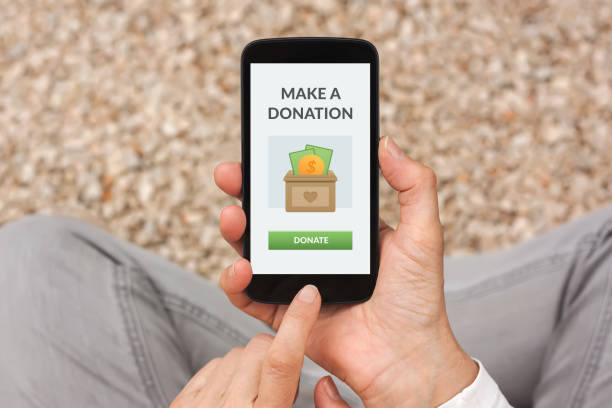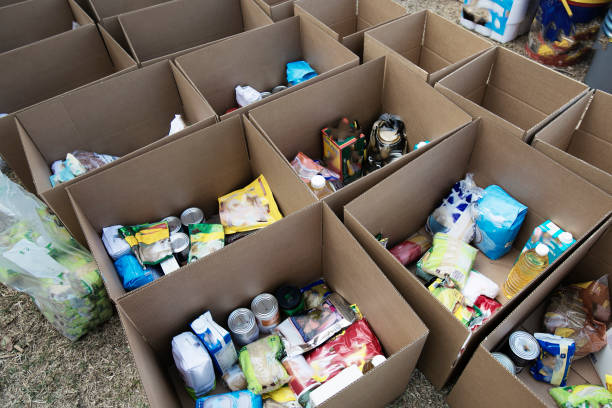Creating Effective Donation Flyers: A Comprehensive Guide
Introduction to Donation Flyers
Donation flyers play a crucial role in fundraising efforts, serving as a visual and informational tool that can inspire people to contribute to a cause. They are designed to capture attention, convey a compelling message, and motivate people to take action. In a world where charitable causes compete for attention, a well-crafted donation flyer can make a significant difference in garnering support and achieving fundraising goals.
The Purpose of a Donation Flyer
At its core, a donation flyer is intended to inform the public about a specific cause or event and to solicit financial support. It provides a clear and concise overview of what the funds will be used for and why the cause is important. The flyer should answer key questions such as: What is the cause? Why is it important? How can people help? The goal is to create an emotional connection and a sense of urgency that encourages potential donors to contribute.
Key Components of an Effective Donation Flyer
A successful donation flyer combines several essential elements to maximize its impact. First, it needs to have a compelling headline that grabs attention. This headline should be direct and emotionally engaging, giving potential donors a reason to read further. Following the headline, the flyer should include a brief but impactful description of the cause or event. This section should provide enough information to generate interest without overwhelming the reader.
Visual elements are also crucial in a donation flyer. High-quality images or graphics related to the cause can make the flyer more engaging and memorable. These visuals should be relevant and evoke the right emotions, helping to reinforce the message of the flyer. Additionally, using color strategically can enhance the flyer’s appeal and effectiveness. Bright, bold colors can draw attention, while softer hues can convey warmth and compassion.
Another important component is a clear call-to-action. This is where the flyer directs readers on how they can contribute or get involved. The call-to-action should be straightforward and easy to follow, providing specific instructions on how to donate or participate. Whether it’s a link to an online donation page, an address for sending checks, or information about a fundraising event, clarity is key.
Design Principles for Donation Flyers
Design plays a vital role in the effectiveness of a donation flyer. A well-designed flyer should be visually appealing but not cluttered. Balance and simplicity are essential to ensure that the flyer is easy to read and navigate. The use of white space can help to highlight important information and make the flyer look less overwhelming.
Typography is another critical aspect of flyer design. The choice of fonts should be legible and professional, with a clear hierarchy that guides the reader through the flyer’s content. Using different font sizes and weights can help to emphasize key points and make the flyer more visually engaging.
Consistency in branding is also important. The flyer should reflect the organization’s brand identity, including its colors, logo, and overall style. This helps to create a cohesive and professional appearance, reinforcing the organization’s credibility and trustworthiness.
Crafting a Persuasive Message
The message conveyed through a donation flyer must be persuasive and compelling. To achieve this, it is important to understand the target audience and tailor the message to their interests and values. Emotional appeals can be particularly effective, as they help to create a connection between the donor and the cause.
When writing the content for a donation flyer, focus on telling a story. Personal stories and testimonials can be powerful tools for illustrating the impact of donations. Sharing real-life examples of how contributions have made a difference can help to engage potential donors and motivate them to give.
Transparency is also crucial. Donors want to know how their money will be used and what impact it will have. Providing clear information about the allocation of funds and the outcomes achieved can help to build trust and encourage donations.
Distribution Strategies for Donation Flyers
Once the donation flyer has been designed and printed, it is essential to consider how it will be distributed to reach the intended audience. Effective distribution strategies can significantly enhance the flyer’s reach and impact.
One common approach is to distribute flyers at relevant events or locations where potential donors are likely to be present. This could include community centers, local businesses, schools, or places of worship. Partnering with organizations or businesses that share similar values can also help to broaden the flyer’s distribution network.
Digital distribution is another effective strategy. Sharing the flyer on social media platforms, through email newsletters, and on the organization’s website can help to reach a wider audience. Creating a digital version of the flyer that is easily shareable and accessible can increase its visibility and engagement.
Measuring the Effectiveness of Donation Flyers
To ensure that donation flyers are achieving their intended goals, it is important to measure their effectiveness. This can be done by tracking the number of donations received, analyzing the response rate, and evaluating the overall impact of the flyer.
Feedback from donors can also provide valuable insights. Understanding what motivated people to contribute or what could be improved in future flyers can help to refine and enhance future fundraising efforts.
Best Practices for Creating Donation Flyers
To maximize the effectiveness of donation flyers, consider the following best practices:
Conclusion
Donation flyers are a powerful tool for fundraising and raising awareness for important causes. By carefully crafting the flyer’s design, message, and distribution strategy, organizations can effectively engage potential donors and inspire them to contribute. A well-designed flyer not only informs but also motivates, helping to drive support and achieve fundraising goals. Whether used for a one-time event or an ongoing campaign, a donation flyer has the potential to make a meaningful impact and support valuable causes.
Introduction to Donation Flyers
Donation flyers play a crucial role in fundraising efforts, serving as a visual and informational tool that can inspire people to contribute to a cause. They are designed to capture attention, convey a compelling message, and motivate people to take action. In a world where charitable causes compete for attention, a well-crafted donation flyer can make a significant difference in garnering support and achieving fundraising goals.
The Purpose of a Donation Flyer
At its core, a donation flyer is intended to inform the public about a specific cause or event and to solicit financial support. It provides a clear and concise overview of what the funds will be used for and why the cause is important. The flyer should answer key questions such as: What is the cause? Why is it important? How can people help? The goal is to create an emotional connection and a sense of urgency that encourages potential donors to contribute.
Key Components of an Effective Donation Flyer
A successful donation flyer combines several essential elements to maximize its impact. First, it needs to have a compelling headline that grabs attention. This headline should be direct and emotionally engaging, giving potential donors a reason to read further. Following the headline, the flyer should include a brief but impactful description of the cause or event. This section should provide enough information to generate interest without overwhelming the reader.
Visual elements are also crucial in a donation flyer. High-quality images or graphics related to the cause can make the flyer more engaging and memorable. These visuals should be relevant and evoke the right emotions, helping to reinforce the message of the flyer. Additionally, using color strategically can enhance the flyer’s appeal and effectiveness. Bright, bold colors can draw attention, while softer hues can convey warmth and compassion.
Another important component is a clear call-to-action. This is where the flyer directs readers on how they can contribute or get involved. The call-to-action should be straightforward and easy to follow, providing specific instructions on how to donate or participate. Whether it’s a link to an online donation page, an address for sending checks, or information about a fundraising event, clarity is key.
Design Principles for Donation Flyers
Design plays a vital role in the effectiveness of a donation flyer. A well-designed flyer should be visually appealing but not cluttered. Balance and simplicity are essential to ensure that the flyer is easy to read and navigate. The use of white space can help to highlight important information and make the flyer look less overwhelming.
Typography is another critical aspect of flyer design. The choice of fonts should be legible and professional, with a clear hierarchy that guides the reader through the flyer’s content. Using different font sizes and weights can help to emphasize key points and make the flyer more visually engaging.
Consistency in branding is also important. The flyer should reflect the organization’s brand identity, including its colors, logo, and overall style. This helps to create a cohesive and professional appearance, reinforcing the organization’s credibility and trustworthiness.
Crafting a Persuasive Message
The message conveyed through a donation flyer must be persuasive and compelling. To achieve this, it is important to understand the target audience and tailor the message to their interests and values. Emotional appeals can be particularly effective, as they help to create a connection between the donor and the cause.
When writing the content for a donation flyer, focus on telling a story. Personal stories and testimonials can be powerful tools for illustrating the impact of donations. Sharing real-life examples of how contributions have made a difference can help to engage potential donors and motivate them to give.
Transparency is also crucial. Donors want to know how their money will be used and what impact it will have. Providing clear information about the allocation of funds and the outcomes achieved can help to build trust and encourage donations.
Distribution Strategies for Donation Flyers
Once the donation flyer has been designed and printed, it is essential to consider how it will be distributed to reach the intended audience. Effective distribution strategies can significantly enhance the flyer’s reach and impact.
One common approach is to distribute flyers at relevant events or locations where potential donors are likely to be present. This could include community centers, local businesses, schools, or places of worship. Partnering with organizations or businesses that share similar values can also help to broaden the flyer’s distribution network.
Digital distribution is another effective strategy. Sharing the flyer on social media platforms, through email newsletters, and on the organization’s website can help to reach a wider audience. Creating a digital version of the flyer that is easily shareable and accessible can increase its visibility and engagement.
Measuring the Effectiveness of Donation Flyers
To ensure that donation flyers are achieving their intended goals, it is important to measure their effectiveness. This can be done by tracking the number of donations received, analyzing the response rate, and evaluating the overall impact of the flyer.
Feedback from donors can also provide valuable insights. Understanding what motivated people to contribute or what could be improved in future flyers can help to refine and enhance future fundraising efforts.
Best Practices for Creating Donation Flyers
To maximize the effectiveness of donation flyers, consider the following best practices:
- Understand Your Audience: Tailor the flyer’s design and message to resonate with the target audience. Consider their preferences, interests, and values.
- Use High-Quality Images: Ensure that all visual elements are high-resolution and professionally designed. Poor-quality images can detract from the flyer’s impact.
- Keep It Simple: Avoid cluttering the flyer with too much text or too many images. Focus on a clear and concise message that is easy to read and understand.
- Include Contact Information: While not required in this instance, providing contact information or links for further inquiries can be helpful for those who want more details.
- Proofread: Ensure that the flyer is free from spelling and grammatical errors. Mistakes can undermine the flyer’s professionalism and credibility.
Conclusion
Donation flyers are a powerful tool for fundraising and raising awareness for important causes. By carefully crafting the flyer’s design, message, and distribution strategy, organizations can effectively engage potential donors and inspire them to contribute. A well-designed flyer not only informs but also motivates, helping to drive support and achieve fundraising goals. Whether used for a one-time event or an ongoing campaign, a donation flyer has the potential to make a meaningful impact and support valuable causes.




